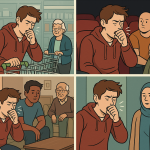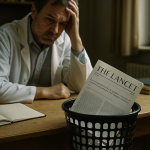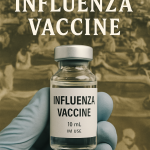In early 2020, headlines were everywhere:
“2.2 million Americans could die from COVID-19.”
To many, it felt like a doomsday prediction. And when that number didn’t come to pass, people assumed the models were wrong.
But here’s the twist: they weren’t.
That 2.2 million figure wasn’t a forecast of what would happen. It was a warning about what could happen—if we did nothing. And with the benefit of hindsight and better data, we now know that number was surprisingly accurate for a world without masks, distancing, or vaccines.
It didn’t happen because we took action.
In other words, the models didn’t fail.
They worked.
🔍 What the 2.2 Million Number Really Meant
The number came from a highly publicized Imperial College London model in March 2020. It said:
If the U.S. took no action—no lockdowns, no masking, no behavior change—COVID-19 could kill over 2 million Americans in just a few months.
That wasn’t fearmongering. It was math—based on what we knew at the time about the virus’s spread and severity.
It also assumed:
- No one changed their behavior
- Hospitals became overwhelmed
- The virus spread unchecked
It was never meant to predict the future. It was designed to help change it.
📉 What Actually Happened—and Why It Matters
The U.S. did take action. Imperfect action. Inconsistent action. But still—enough to make a difference.
And even with those efforts:
- Over 1.2 million Americans have died of COVID
- Many hospitals were overwhelmed anyway
- Vaccines didn’t arrive until the second year of the pandemic
So yes—we “only” had about half the deaths the worst-case scenario projected. But that’s not evidence the models were wrong. That’s evidence that they successfully informed life-saving decisions.
If we had done nothing?
Retrospective modeling now shows we could’ve easily exceeded that 2.2 million figure.
🧠 Why People Still Think the Models Were Wrong
It’s a psychological paradox: when prevention works, people forget what was prevented.
When a hurricane misses your house, you don’t regret boarding the windows—you feel relieved. But when a pandemic is blunted by public health action, people ask, “Was all that really necessary?”
In reality, the reason the worst-case didn’t happen is precisely because we listened.
🔁 What We Know Now
Looking back, the early models got a lot right:
- They correctly identified how fast the virus could spread without interventions
- They warned of healthcare system overload, which still happened in places
- They estimated fatality rates that were later refined—but in the same ballpark
Modern retrospective models, with better data, validate the early projections. Not only was 2.2 million plausible, it may have been optimistic for a do-nothing scenario.
✅ Models Weren’t Overblown—They Were Heard
The truth is simple:
The models didn’t miss. We responded.
And as messy as that response was, it saved millions of lives worldwide.
So the next time someone says, “Didn’t they say two million would die?”
You can answer:
“Yes. That’s what would’ve happened.
But we changed the story—because the models gave us time to act.”
💡 If this changed how you think about the early COVID models, share it.
You might help someone else understand what they got right.
For Further Reading
- Evaluating the effects of shelter-in-place policies during the COVID-19 pandemic
- Effectiveness of non-pharmaceutical interventions for COVID-19 in USA
Last Updated on June 27, 2025







